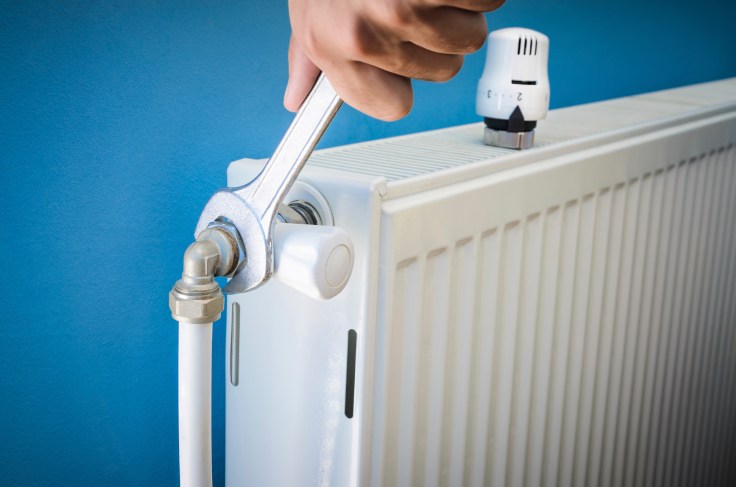
Whether you’re heading into winter or just getting over the colder months, making plans to keep your home warm, in the most efficient way, is something to consider year round.
There are several ways in which you can bring comfort and warmth into your home. These include underfloor heating systems, solar heating, radiators, and boilers, but what is the best way to keep you warm during winters without putting a strain on your budget?
Small steps can make a huge difference when it comes to ensuring that your home is insulated. Whether you have a draft coming in through the windows or have gaps in the floorboards, the following budget-friendly solutions will help you take care of these issues to keep your home snug.
Regular Servicing of the Boiler
It is vital to get your boiler serviced to ensure it can meet the demands of a cold winter. If you have a boiler that has long passed its prime age, there is a chance it will not perform as efficiently as it once did.
A defective and clogged boiler can cause your heating bill to increase exponentially, as it will need to work much harder to bring the temperature of your home to the desired level.
It is best to get your boiler serviced every year, particularly before winter, to keep it running in tip-top condition. It is also vital to get rid of the misconception that continuously running your home’s heating decreases your heating bill. The best way to save energy and your living costs is to have the heating on only when you need it.
Use Extra Layers
Although a bit obvious, but still an excellent way to stay warm on cold nights is by layering up. Think about investing in some thick bedspreads, throw blankets, electric blankets, and even weighted blankets.
Rearrange Your Furniture
The placement of your furniture can also help you save energy and keep your home warm. Make sure that the radiator is not blocked by the bed or the sofa, as this can prevent the whole room from heating up.
Position furniture like sofa, table, or the bed around the heat sources as even a partial blocking can disrupt the amount of heat being circulated in the room.
Update Your thermostat
A thermostat works with the boiler to control your home’s temperature. But the thermostats in older homes can degrade over time, which can affect your boiler’s performance, causing delays in switching on or running at a much higher temperature. You can contact affordable furnace installation solutions in Ohio, they will help to ensure they are running efficiently and can identify potential problems before they become major failures.
Upgrading your thermostat not only helps control your heating efficiency but also saves you money and prevents energy from being wasted. Technological advancements have also made it possible to control the thermostat of your home via mobile phones, making sure that your home is all warm and toasty when you arrive.
Keep Your Curtains Open During Daytime
Keeping the curtains closed at night and open during the day also helps to keep your home warm. The sunlight streaming in through the windows during the day will naturally heat the room. By closing the curtains as the night gets chilly, you can help retain this heat.
Place Rugs On The Floor
If you do not have time to seal your floorboards, placing a couple of rugs on the floor can offer a quick-fix solution. This will not only make your home feel cozier and warmer, but it will also give it a trendy look.
Fix A Shelf Above The Radiator
You can also control the heat of your room with the help of a floating shelf. Fixing a shelf above the radiator prevents the heat from rising up the ceiling. It acts as a shield to make the heat shift outwards from the radiator to efficiently heat up the room.
Make Your Windows Draft-Proof
Several older properties feature single glazed doors and windows, which allow heat to escape outside and let in the cool outdoor air. You should examine all your doors and windows and look for gaps in the frame that may allow drafts to move freely.
It might also be a better solution to invest in double-glazed doors if there are significant drafts in the frame that cannot be easily covered. If you live in a rented home where it is not possible to make any major changes or if your budget does not allow you to replace doors and windows, use draft stoppers to cover up the holes in the framework. This, however, is a short-term solution.
Close Off Your Chimney
Your chimney is another place that can let in an excessive amount of draft into your home as the weather starts to change. Although a chimney acts as the focal point of your living room, an open chimney can let in unwanted drafts and cause the heat to escape. In such a case, it is best to block your chimney, but it should be done carefully and properly.
You should be careful not to seal the top of the chimney if you frequently use your fireplace, as doing so will seal the heat inside and result in extreme overheating.
Bleed Your Radiators
It is also vital to make sure that your radiators work at their full potential. Cold spots on the radiator are an indication that air is trapped inside them. This can prevent the proper circulation of warm water in the radiator, which will affect your radiator’s performance. Bleeding them will ensure there is no air trapped inside to hinder their performance.
Conclusion
Irrespective of whether you live in a city apartment or a country house, as soon as the temperatures start to drop, you are tempted to turn up the thermostat of your heater a notch or two. With the help of our above-mentioned tips, you can easily keep your home snug and comfortable while saving on energy bills.
We hope you found this blog post Keep Your Home Snug With Our Guide to Central Heating, useful. Be sure to check out our post Which Smart Home Devices Help Lower Energy Bills? for more great tips!
Have Experience in the Moving Industry? Want an Additional Income Stream? Work With All Around Moving!
Partner with us and we’ll help you profit. Set your own hours, work from anywhere, make steady income. Click here to learn more.





